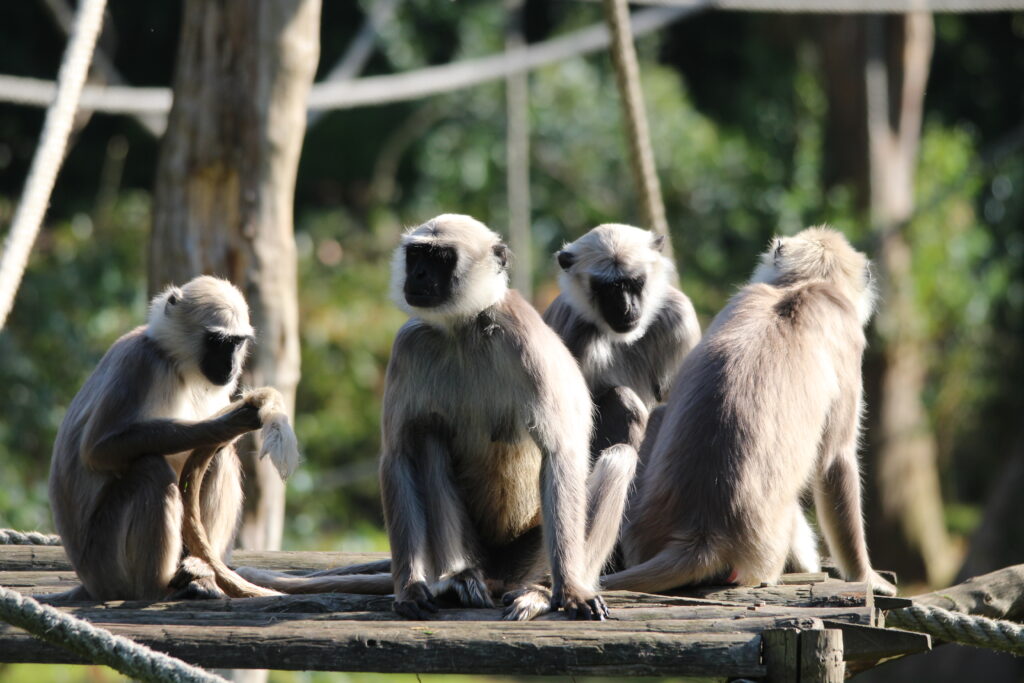
HANUMAN LANGUR
Order: Primates
Family: Cercopithecidae
Genus: Semnopithecus
Species: Entellus
Geographic distribution: Southern Asia
Habitat: Forests, scrubland, cultivated fields, towns and villages.
Size: 58 to 64 cm long (without tail)
Lifespan: 20-30 years
Weight: 10-13 kg
Sexual Maturity: 3 to 5 years
Gestation: 6-7 months
Litter: 1 to 2 pups
Diet: Folivore, leaves, fruits, flowers, bark…
Protection Status: IUCN Status CR – Least Concern
Description
The social structure of Hanuman langurs varies depending on their habitat. Some populations live in harems, while others form mixed groups. Unlike many primates, Hanuman langurs spend 80% of their time on the ground, using trees only for sleeping. The dominance hierarchy determines their positionin the tree: the dominant male occupies the highest and safest spot, followed by females and their young, while young males are positioned lower in the tree.
Threats and perservation
In Indian mythology, Hanuman langurs are considered the descendants of the monkey-god Hanuman. Revered by both Buddhists and Hindus, they are often welcomed in temples, symbolizing a spiritual connection with the deities. However, despite their sacred status, Hanuman langurs suffer from the impacts of human activities. Intensive deforestation, driven by logging and agriculture, leads to the loss and fragmentation of their natural habitat, reducing the essential spaces for their survival.